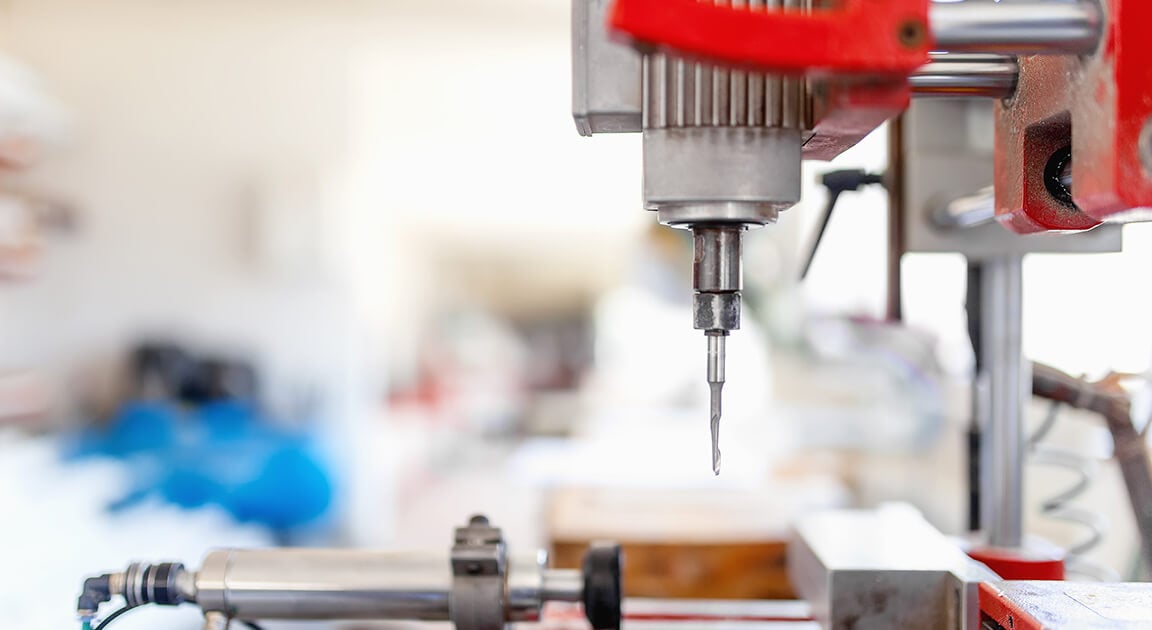5 Tax Tips for Manufacturers

The manufacturing industry creates millions of jobs for the citizens and pays billions of dollars in taxes to the government. In return, the IRS rewards manufacturers with numerous tax benefits.
Your business may not be eligible for every credit, but chances are you are missing out on some opportunities applicable to your practice. If you are a manufacturer, below are some of the most lucrative tax benefits that you should explore.
R&D Tax Credit
Many qualifying manufacturers don't take advantage of research and development (R&D) tax credits offered by the government. The reason is the widespread misconception that R&D tax credit is a reward for manufacturing alone. Conversely, you can qualify for efforts like creating a new product line, implementing a new system, and so on.
According to the Economic Recovery Tax Act of 1981, any business that designs, develops, or improves a product or process is eligible for the R&D tax credit. The entity can enjoy a dollar-for-dollar reduction in federal tax liability.
Qualifying expenses could be anything a firm does to make products better and more affordable. You can claim the R&D tax credit for supplies, labor, time, and other expenses related to manufacturing or improving a product or system.
Export Incentives
The government offers export incentives to encourage industries to export some types of products and services. The main purpose of the boost is to maintain the competitiveness of domestic products in the global market. By setting up favorable legal measures and tax programs for businesses, firms within the national economy can access foreign markets cost-effectively.
One of the major export tax incentives includes a company’s ability to form an IC-DISC. Any organized, legal entity can elect to become an Interest Charge Domestic International Sales Corporation (IC-DISC) by filing Form 4876-A. Generally, the 2 main benefits of an IC-DISC are (1) an opportunity to convert ordinary income to qualified dividend income and (2) an opportunity to defer income on qualifying export sales. These are considerable tax incentives for U.S. manufacturers that export products. These are just a few of the favorable tax incentives an IC-DISC will reap.
In other words, export incentives are like kickbacks to exporters. Other examples include low-cost loans, direct payments, subsidies, and more.
The government's deliberate move to collect less tax from exporters enables firms and industries to lower their global prices. Domestic consumers might end up paying more for products than foreign customers. But here's the catch. Local goods become more affordable and popular internationally.
100% Expensing Deduction for Property
The 2017 Tax Cuts and Jobs Act (TCJA) amended tax laws in ways that affected virtually every business entity. There were changes in income tax rates for pass-through business owners and limits on some deductions, among other variations. Since the adjustments, small business taxpayers can expense a remarkable cost of certain business assets.
One tax benefit that no manufacturer should miss is the 100% depreciation deduction for the first year. It covers depreciable business assets whose recovery period doesn't exceed 20 years. Items like computers, appliances, machinery, equipment, and furniture may qualify. Other allowable assets though under restrictions are film, TV, and theatrical productions, as well as used qualified property.
You can elect to expense the cost of any of your Section 179 property and deduct it in the year you placed the asset into service. The tax law caps the deduction at $1 million to a maximum phase-out threshold of $2.5 million.
Among the items included in Section 179 property include office and business equipment, machinery, livestock, and qualified, elected real property. You can categorize certain improvements made to commercial property as qualified real property.
QBI Deduction for Qualified Business Income
While C corporations enjoy a federal income tax flat rate of 21%, they are subject to double taxation. That is, they pay income tax for earning an income, and an additional tax when paying dividends or selling shares. The TCJA, however, substantially reduces the income tax rate for C corporations and spares them the alternative minimum tax (AMT).
Owners of Pass-through entities don't qualify for the above-mentioned income tax rate, but they may be eligible for the qualified business income (QBI) deduction. QBI deduction is currently accessible to non-corporate owners of qualified business entities.
The deduction for the manufacturing industry is generally 20% of QBI, subject to some conditions. Manufacturers who operate sole proprietorships, partnerships and S corporations can take advantage of this tax benefit.
QBI is the business owner's portion of items of taxable gain, loss, deductions, and income from a qualified business, without AMT adjustments. It excludes investment-related items, reasonable owners' compensation, and payments to the pass-through entity owners. The IRS treats your QBI deduction as an allowable itemized deduction on your return, though you don't need to itemize it to claim.
State Income Tax Nexus
Businesses operating in states with high state income tax rates can sometimes achieve considerable tax savings by taking advantage of state income tax nexus rules. Your overall tax rate can potentially reduce if you spread your practice to more business-friendly states.
Various states have different nexus rules, but they all revolve around factors such as your sales, property within the state, and payroll. You can grow your opportunities for tax benefits by building more ties and relationships in the states in which you operate. For example, hiring workers and facilities, signing new contracts, and so forth.
The federal and state governments offer manufacturers various tax benefits to help them thrive. Though the incentives are unlimited, not all of them apply to every business model. Working with an accounting professional will help you to discover and apply all the lawful tax breaks relevant to your business. Contact us if you have any questions.

- Belief, Maximizer, Adaptability, Learner, Input
Jim Honz
Jim Honz, Tax Consultant and Former Shareholder, built his career developing specialized expertise in tax advisory and business entity structuring. Known for his strategic approach and depth of knowledge, he has helped businesses navigate complex tax regulations and achieve their financial goals.
Throughout his career, Jim has focused on creating tailored tax strategies for clients, particularly in the agribusiness and manufacturing industry. His expertise extends to LIFO inventory methods, tax-exempt organizations, and export tax incentives (IC-DISC), where he has helped clients maximize savings and improve profitability.
While Jim has transitioned from his role as Tax & Consulting Shareholder, he continues to share his expertise with Lutz clients on a limited basis. He is available for scheduled consultations and can be reached via email for specialized tax planning needs, particularly during peak seasons.
Recent News & Insights
Corporate Transparency Act: BOI Reporting Update
The S&P 500 Enters Correction Territory + 3.19.25
The CFO Outsourcing Option for Hospitals + Why it May Make Sense for You
Accounting Today Names Lutz a 2025 Top 100 Firm and Regional Leader




%20(1)-Mar-08-2024-09-22-41-1011-PM.jpg?width=300&height=175&name=Untitled%20design%20(5)%20(1)-Mar-08-2024-09-22-41-1011-PM.jpg)
%20(1)-Mar-08-2024-09-27-14-7268-PM.jpg?width=300&height=175&name=Untitled%20design%20(6)%20(1)-Mar-08-2024-09-27-14-7268-PM.jpg)

%20(1)-Mar-08-2024-09-11-30-0067-PM.jpg?width=300&height=175&name=Untitled%20design%20(3)%20(1)-Mar-08-2024-09-11-30-0067-PM.jpg)
%20(1)-Mar-08-2024-09-18-53-4361-PM.jpg?width=300&height=175&name=Untitled%20design%20(4)%20(1)-Mar-08-2024-09-18-53-4361-PM.jpg)
-Mar-08-2024-09-03-21-1119-PM.jpg?width=300&height=175&name=Untitled%20design%20(1)-Mar-08-2024-09-03-21-1119-PM.jpg)
-2.png?width=264&height=160&name=Website%20Featured%20Content%20Images%20(1)-2.png)
-Mar-08-2024-08-50-35-9527-PM.png?width=300&height=175&name=Untitled%20design%20(1)-Mar-08-2024-08-50-35-9527-PM.png)


.jpg)




